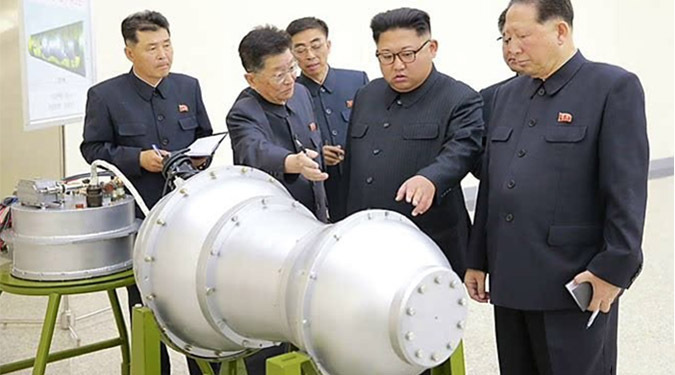About the Author
Damin Jung
Damin Jung was an NK News correspondent based in Seoul. She previously worked at the CSIS (Center for Strategic and International Studies) Korea Chair.

Get behind the headlines
|
News Kim Jong Un inspects thermonuclear weapon to be loaded in ICBM warheadNorth Korea says all components domestically produced, meaning unlimited production possible  North Korea has developed a hydrogen-bomb that can be loaded onto a new intercontinental ballistic missile (ICBM), state media outlet the Korea Central News Agency (KCNA) said on Sunday. The KCNA published photos of Kim Jong Un inspecting what was described as a thermonuclear warhead being prepared adjacent to the nosecone of a Hwasong-14 ICBM. © Korea Risk Group. All rights reserved. |